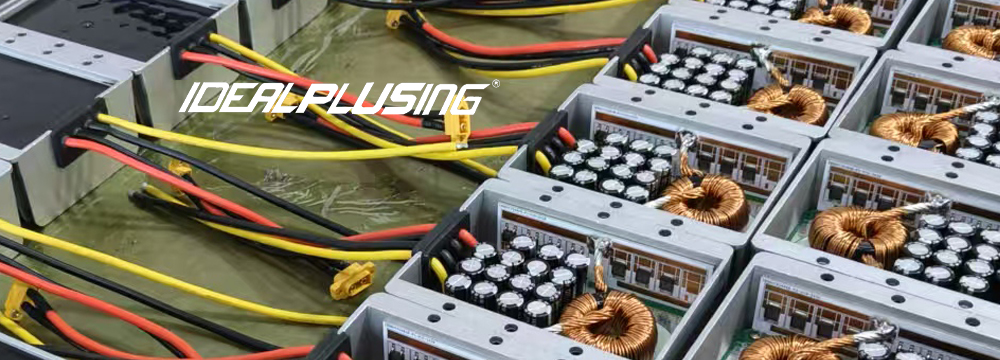Boost DC-DC converter is a commonly used power management circuit that can convert a lower DC input voltage into a higher DC output voltage. Its working principle is mainly based on the energy storage and release principle of the inductor and the switch control of the switch tube. Below we will analyze the circuit diagram and working principle of the Boost DC-DC converter in detail.

Boost DC-DC converter
The circuit of the Boost DC DC Converter mainly includes input voltage, inductor, switch tube, diode and output voltage.
Working principle of Boost DC-DC converter
Working process
The working process of the Boost DC DC Converters is mainly divided into three stages: charging stage, energy storage stage and discharge stage.
(1) Charging stage: When the switch tube is in the on state, the input voltage charges the capacitor through the inductor and the switch tube, and the inductor absorbs energy at this time.
(2) Energy storage stage: When the switch tube is in the off state, the input voltage and the inductor jointly charge the output capacitor. At this time, the inductor releases the energy absorbed before to maintain the stability of the output voltage.
(3) Discharge phase: When the switch tube is turned on again, the inductor charges the output capacitor through the switch tube and the diode, and the inductor absorbs energy again.
Working principle analysis
It can be seen from the above working process that the working principle of the Boost Converters is mainly based on the energy storage and release principle of the inductor and the switch control of the switch tube.
In the charging phase, the inductor absorbs energy and stores magnetic field energy, and the current gradually increases; in the energy storage phase, the inductor releases the energy absorbed before to maintain the stability of the output voltage; in the discharge phase, the inductor absorbs energy again to prepare for the next charging phase. The switch control of the switch tube ensures the energy transfer and conversion efficiency.
Advantages and disadvantages of Boost DC-DC converter
The Boost Converters has the following advantages: simple circuit, easy to implement, output voltage higher than input voltage, can improve the power supply capacity of the power supply, etc. However, the Boost DC-DC converter also has some disadvantages: it may generate large noise, and the switch tube may be overstressed.
Application of Boost DC-DC converter
Boost DC-DC converter is widely used in various electronic devices, such as computers, communication equipment, industrial control equipment, etc. In addition, Boost Converters can also be used in LED lighting, electric vehicles and other fields.
With the development of electronic equipment and the improvement of power supply performance requirements, the application prospects of Boost DC-DC converters will be broader. DC/DC converter, as the name implies, refers to a device that converts one DC voltage into another DC voltage.
It is widely used in electronic equipment that requires voltage conversion, and adjusts the output voltage to meet the specific needs of different devices. DC/DC converters are usually called linear regulators or switching regulators, named according to their different conversion methods.
Working principle of DC/DC converter
The working principle of DC/DC converter is mainly based on switching power supply technology. Its core lies in the use of high-frequency switches (such as MOSFET) and energy storage elements (such as inductors and capacitors) to achieve voltage conversion and stabilization.
Specifically, when the switch is in the on state, the input voltage supplies power to the load through the inductor and charges the capacitor at the same time; when the switch is off, the current in the inductor continues to flow, supplies power to the load through the diode, and the capacitor also provides energy to the load.
By controlling the on and off time of the switch (that is, the duty cycle), the output voltage can be adjusted.
In addition, the DC/DC converter also uses a negative feedback mechanism to ensure the stability of the output voltage.
By detecting the output voltage and comparing it with the reference voltage, the controller adjusts the duty cycle of the switch to compensate for voltage fluctuations, thereby achieving precise control of the output voltage.
Classification of DC/DC converters:
DC/DC converters can be divided into many types according to their functions and application scenarios.
The most common classification method is to divide them into three types: Boost, Buck, and Buck-Boost according to the relationship between input and output voltages.
Boost DC/DC converter: The output voltage is higher than the input voltage, which is suitable for scenarios where the battery voltage needs to be boosted to meet the needs of the device.
Buck DC/DC converter: The output voltage is lower than the input voltage, which is widely used in various portable devices and electronic products to convert the higher battery voltage into the low voltage required by the device.
Buck-boost DC/DC converter: It can both boost and buck under certain conditions, and is suitable for occasions with a large range of input and output voltage variations.
In addition, DC/DC converters can also be classified according to different topologies, such as charge pump type and inductive energy storage type. Each type has its own unique characteristics and application scenarios.







